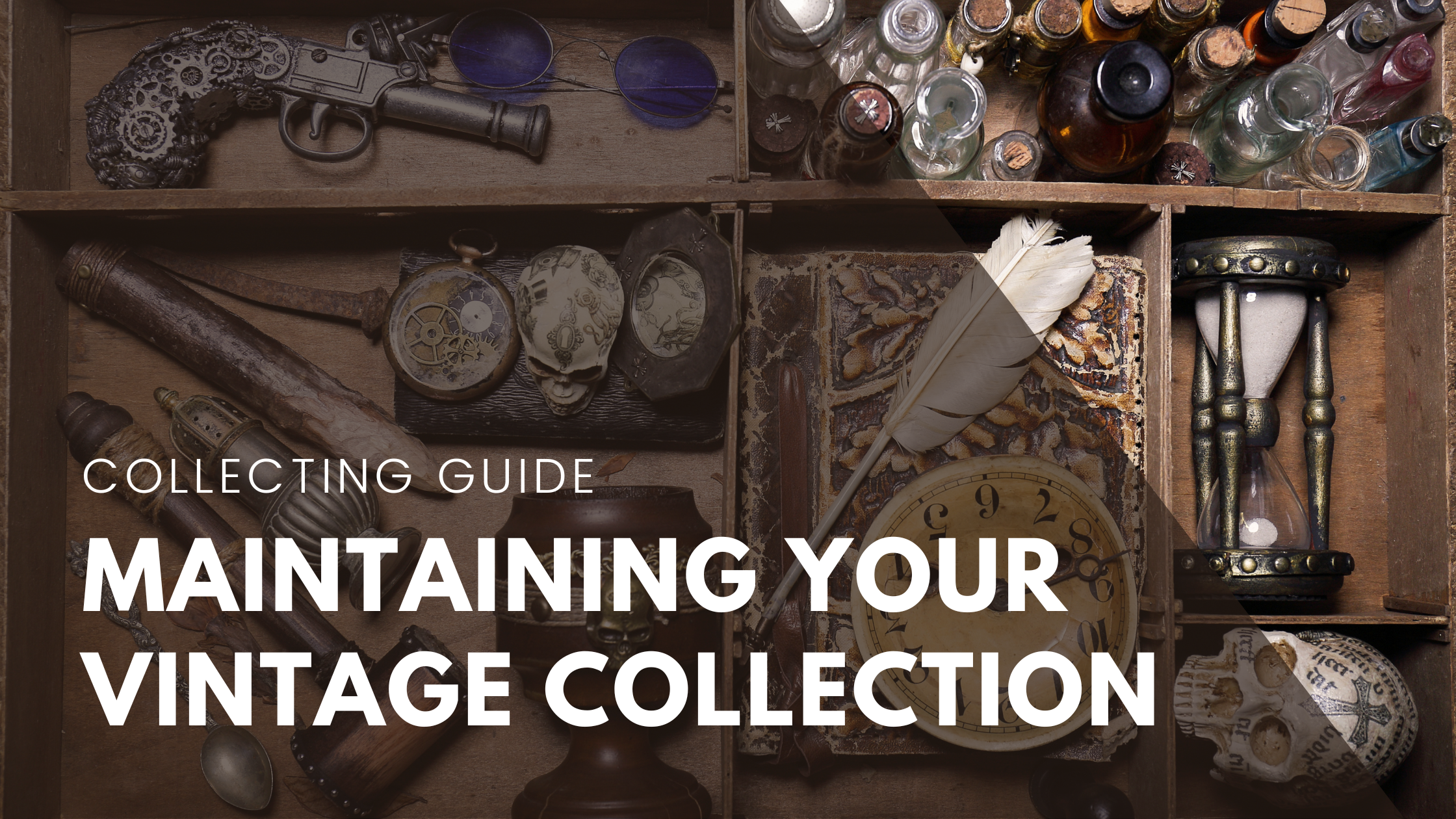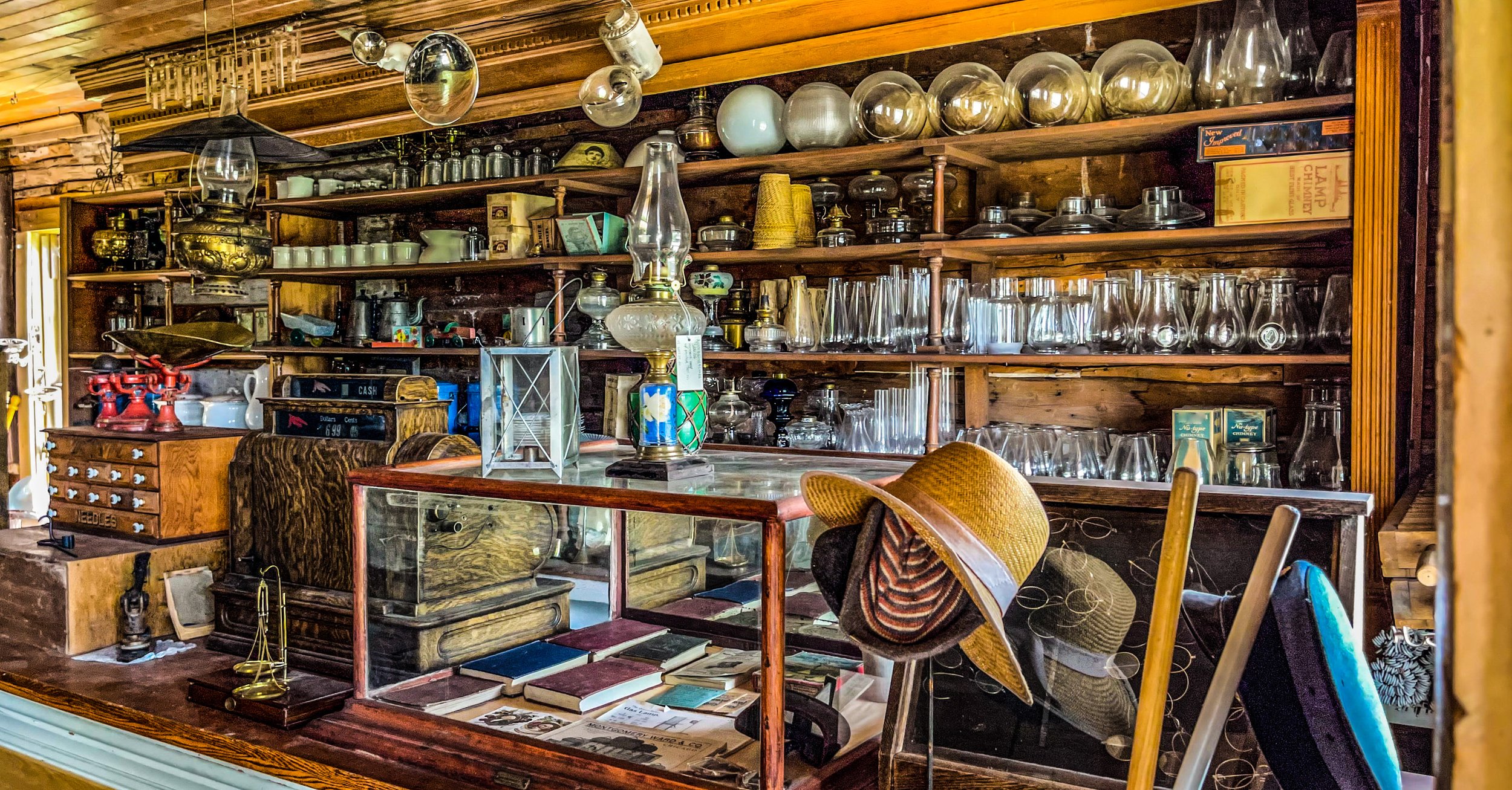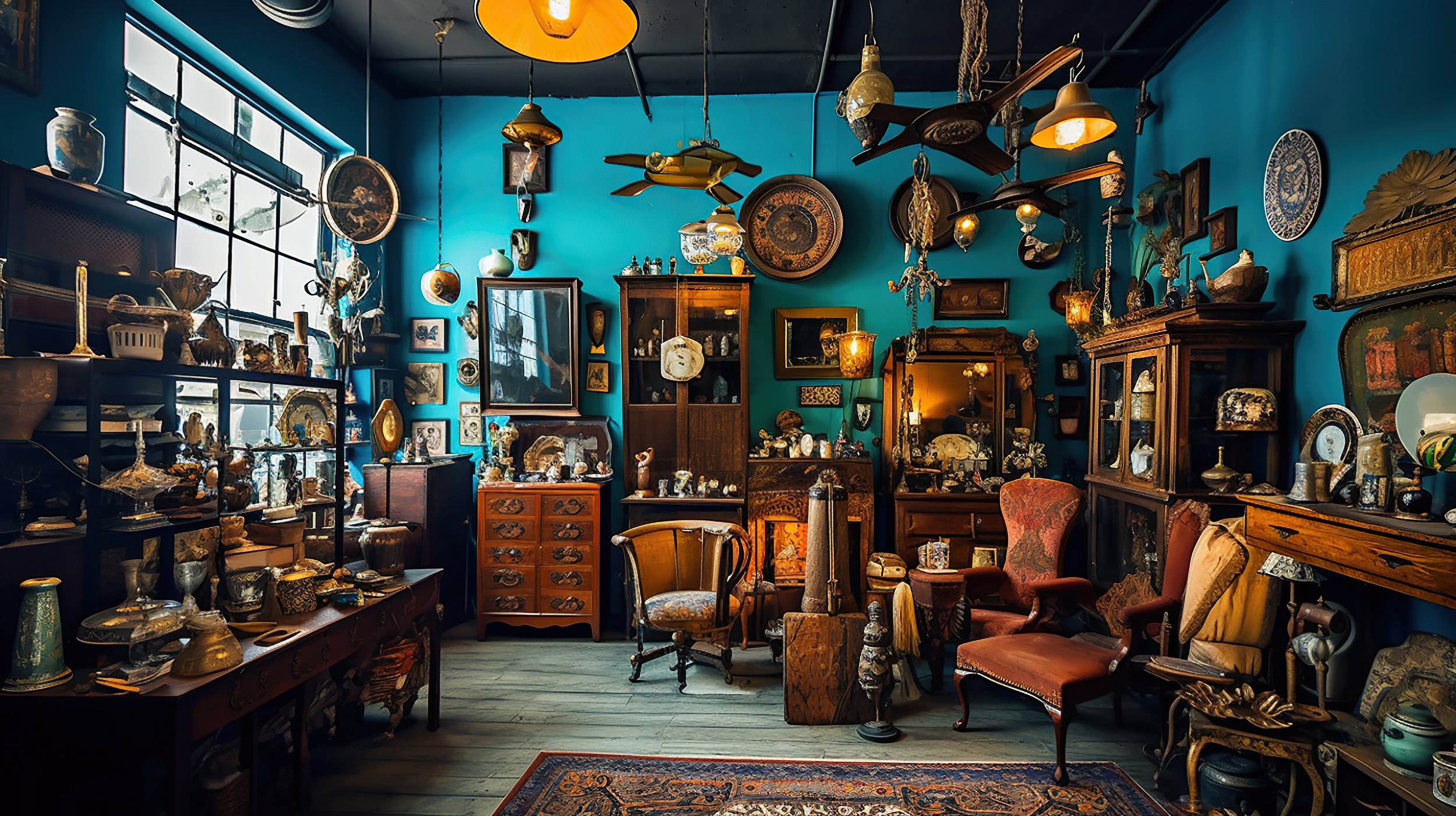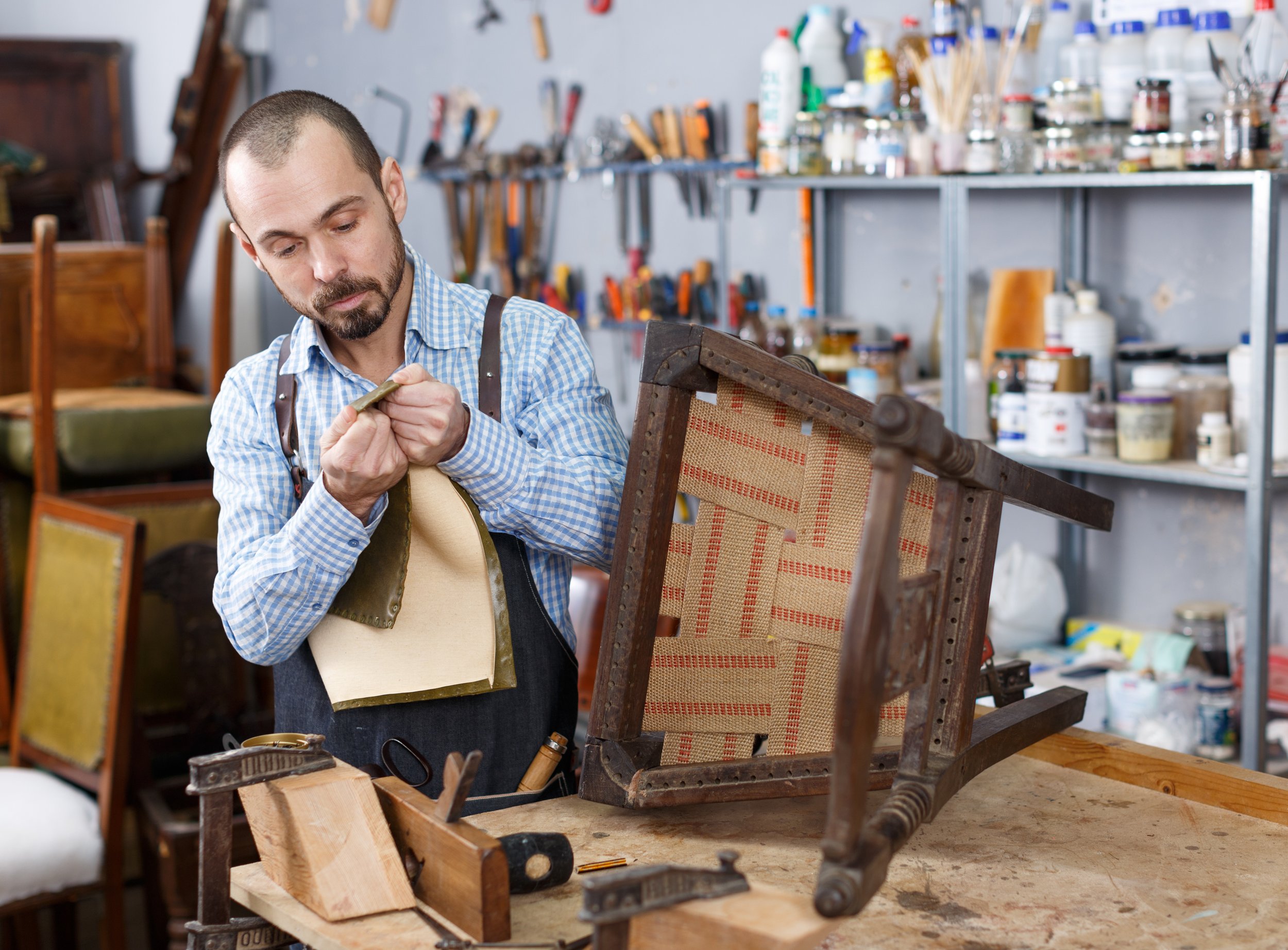Preserving the Past: Tips for Maintaining and Preserving Your Vintage Collection
The allure of collecting vintage items goes beyond the tangible appeal of owning rare or unique pieces. It's about the emotional journey these treasures take us on—unveiling stories of the past, connecting us to generations before, and evoking a sense of nostalgia that transcends time. From weathered postcards to antique porcelain dolls, every vintage piece carries a whisper of history, a touch of sentimentality, and a part of the lives that came before us.
In this pursuit of nostalgia and connection, collectors become the custodians of time-traveled emotions. As we cradle these relics of bygone eras, we're not just holding objects but memories. And with this privilege comes a responsibility—to ensure that these cherished relics remain intact for future generations.
As we embark on this journey into vintage collecting, it's crucial to recognize the importance of preservation. Just as each item has a unique history, it also promises future stories. Proper maintenance and care safeguard these delicate bridges to the past, allowing us to continue sharing their stories with those who will come after us.
So, let us dive into the world of vintage treasures with the understanding that they're not merely possessions but vessels of emotion and memory. Let's explore how we can honor their significance by preserving and maintaining their condition so that their emotional value can continue to weave its magic across time and generations.
Preserving Vintage Items: Honoring Their Significance
Significance of Maintaining Historical and Sentimental Value:
Cultural Heritage: Vintage items offer a glimpse into the past, allowing us to understand how people lived, dressed, and interacted. They help preserve cultural heritage, reminding us of traditions, customs, and styles that have shaped society.
Personal Connections: These items hold sentimental value, linking us to our past or ancestors we may have never met. They're tangible connections to loved ones, enabling us to touch what they touched and feel what they felt.
Collective Memory: Vintage collections create a bridge between generations, passing down memories and stories that might otherwise fade over time. They help preserve collective memories that enrich our understanding of history.
Contribution of Proper Preservation:
Value Appreciation: Properly preserved vintage items tend to appreciate over time. Authenticity, rarity, and condition are crucial factors in determining their worth.
Credibility: Detailed records of preservation, provenance, and historical context enhance the credibility of your collection. They give potential buyers or enthusiasts a deeper understanding of the items' significance.
Historical Accuracy: Proper preservation maintains the authenticity of vintage items, ensuring they remain accurate representations of their era. This accuracy is vital for historical research and education.
Investment: Well-preserved vintage collections can be considered financial and cultural investments. They can be passed down through generations, enriching family legacies.
Cleaning and Handling
Gentle Cleaning: For collectibles with surface dirt or grime, use soft brushes, cotton swabs, or microfiber cloths to remove debris gently. Be cautious not to scrub too hard, especially on painted or printed surfaces.
Removing Stains: Some items may develop stains over time. Research appropriate stain removal techniques specific to the material of the collectible. To avoid unintended damage, test any cleaning solution on a small, inconspicuous area first.
Clean Hands: Always thoroughly dry your hands before handling vintage items. This prevents the transfer of oils, dirt, and moisture that can damage delicate surfaces.
Use Gloves: When handling delicate items, such as textiles or photographs, consider wearing clean, lint-free gloves. Gloves can protect the items from oils and acids present on your skin.
Handle with Care: Always handle vintage items gently. Avoid excessive force or pressure leading to tears, creases, or breakage.
Repairing Minor Damage: Consider using archival adhesives or tapes for minor damage like loose book pages or minor tears in paper-based items. Consult with a professional conservator for more complex repairs.
Appropriate Storage Solutions
Temperature and Humidity Control: Extreme temperatures and high humidity can cause damage to collectibles, especially those made of delicate materials like paper, vinyl, or textiles. Store your items in a climate-controlled environment, avoiding areas prone to fluctuations in temperature and humidity.
UV Protection: Prolonged exposure to sunlight can lead to fading, discoloration, and deterioration of collectibles. Display items away from direct sunlight or use UV-resistant glass or acrylic display cases to shield them from harmful rays.
Acid-Free Materials: When storing documents, photographs, or paper-based items, use acid-free materials such as archival folders and sleeves to prevent acid transfer and yellowing over time.
Dusting and Cleaning: Regularly dust and clean your collectibles using gentle techniques and appropriate cleaning materials. Avoid harsh chemicals or abrasive tools that can damage delicate surfaces.
Proper Framing: Use acid-free mats and framing materials to protect the items from deterioration when framing artwork or photographs. Consider using UV-resistant glass to safeguard against fading.
Avoid Overcrowding: Avoid overcrowding items in display cases or storage containers, as this can lead to pressure and damage to delicate pieces.
Documenting Your Collection
Keeping detailed records for each item in your vintage collection is essential for several reasons:
Provenance: Provenance refers to the documented history of ownership and origin of an item. It adds credibility and authenticity to your collection, making it more valuable to collectors and enthusiasts.
Historical Context: Records provide insight into the historical context of each item, preserving its story and relevance over time.
Value Assessment: Having accurate records helps appraisers assess the value of your collection more accurately.
Future Generations: Records ensure that future generations understand the significance of each item and its place in your family's history.
Ways To Document Your Collection:
Detailed Descriptions: For each item, create a detailed written description that includes:
Item name, type, and category.
Dimensions, materials, and condition.
Any unique features, markings, or signatures.
Any relevant historical context or personal stories.
Photographs: High-quality photographs are invaluable for capturing the visual details of each item. Take photos from various angles and close-ups of distinctive features.
Use good lighting and a plain background to highlight the item.
Include shots of any markings or signatures.
Digital Documentation: Digital platforms offer efficient ways to organize and share your collection's records:
Spreadsheets: Create a spreadsheet with columns for item name, description, provenance, condition, etc.
Database Software: Use database software to create a digital catalog with searchable fields.
Inventory Apps: Specialized inventory apps allow you to input details, upload photos, and organize your collection on your smartphone.
Scanning and Archiving Documents: For items with paper documents, such as certificates, old letters, or advertisements, scan and archive them digitally. This preserves their content and prevents physical deterioration.
Online Collections Management Platforms: Several online platforms are designed for collectors to manage and document their collections. These platforms often offer templates and fields tailored to different types of collectibles.
Store Backup Copies: Ensure you have backup copies of your digital records in case of technological failures or data loss. Cloud storage or external hard drives are reliable options.
Share with Experts: If you're seeking appraisals or joining collector communities, having detailed records enhances the credibility of your collection and discussions.
Remember, the value of your collection goes beyond its physical items; it's also in the stories and histories they have. By carefully documenting your vintage collection, you're preserving its essence and contributing to its enduring legacy.
Handling and Displaying
Display Cases: Invest in high-quality display cases made of acrylic or glass to protect your collectibles from dust, dirt, and potential damage caused by handling. Ensure the cases are spacious enough to allow breathing room for the items.
Protective Sleeves: Use plastic or acid-free protective sleeves for items like comics, trading cards, or photographs to shield them from fingerprints, moisture, and dust.
Acid-Free Storage Containers: Store items in acid-free boxes, folders, or containers, especially for paper-based collectibles. Acid-free materials prevent the breakdown of the collectible's materials over time.
Bubble Wrap and Padding: When moving or transporting collectibles, use bubble wrap, foam, or other protective padding to prevent items from shifting and potentially getting damaged.
Silica Gel Packets: Place silica gel packets in storage containers to absorb moisture and prevent mold or mildew growth.
Professional Conservation and Restoration
Preserving vintage items requires a delicate balance between maintaining authenticity and addressing their condition. While some things can be cared for at home, certain situations necessitate the expertise of professional conservation or restoration services. Here are scenarios where seeking professional help is essential to ensure your treasures receive the care they deserve:
Extensive Damage or Deterioration: Items that have suffered severe damage or significant deterioration, such as torn textiles, chipped ceramics, or faded artwork, should be entrusted to professionals. Their specialized skills can restore these items without compromising their authenticity.
Antique Furniture: Antique furniture with intricate detailing, inlay work, or delicate finishes requires expert attention. Professionals can repair structural damage, restore finishes, and enhance the overall aesthetics while respecting the original craftsmanship.
Artwork and Paintings: Vintage artwork and paintings that show signs of flaking, discoloration, or degradation need the skill of conservators. They can stabilize fragile pigments and surfaces while preserving the artist's intent.
Textile Restoration: Delicate vintage fabrics, such as clothing, quilts, and tapestries, often require specialized cleaning and repairs. Professionals can handle the intricacies of these materials to prevent further damage.
Metalwork and Jewelry: Valuable vintage jewelry or metalwork can benefit from expert restoration. They can clean, repair, and recondition items without diminishing their value.
Books and Paper Documents: Vintage books, maps, and paper documents that are fragile, torn, or discolored should be entrusted to conservators specializing in paper restoration. They can repair tears, remove stains, and stabilize the paper.
Finding Reputable Experts
Research: Start by researching local conservation and restoration experts with experience in your type of vintage item. Check their credentials, reviews, and previous work.
Recommendations: Seek recommendations from fellow collectors, museums, or historical societies. They often have insights into reputable professionals.
Museum Affiliations: Professionals affiliated with reputable museums or conservation organizations are more likely to have established expertise.
Consultation: Schedule consultations with potential experts. Discuss the specific needs of your items and inquire about their approach and methodology.
Ask Questions: Don't hesitate to ask about their previous work, training, and any guarantees they offer for restoration services.
Portfolio Review: Ask to see examples of their previous restoration projects. This can give you a better sense of their skill level and approach.
Get Estimates: Request estimates for the restoration work. Compare pricing, but also consider the quality and reputation of the expert.
Entrusting your vintage items to professionals ensures they receive the care and attention necessary to preserve their historical and sentimental value. With the right experts, you can rest assured that your treasures are in capable hands, and their authenticity and beauty will be lovingly restored for generations to come.
With each delicate brushstroke of care, each meticulous record kept, and each professional conservator consulted, we contribute to preserving our collection's significance. We recognize that these vintage pieces are more than possessions; they are gateways to cultures, eras, and lives lived fully.
Let us continue to treasure these items as mere possessions, emissaries of history, and emblems of the human experience. Let's ensure that their stories are passed down with clarity and authenticity. With each act of preservation, we weave a tapestry that connects us to those who came before and those who will follow—an enduring legacy of reverence for the past and hope for the future.








